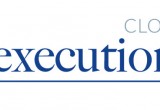The Hall Of Shame: Four Companies That Couldn't "Get It Done" In 2012
Each year OnPoint compiles a list of companies that were unable to close the strategy execution gap. So which companies made the list this year?
Online, December 12, 2012 (Newswire.com)
-
Research in Motion (RIM)
Execution Gap Maker: Lack of Coordination and Collaboration
This is the second year in a row RIM has made the Hall of Shame. In 2011, RIM was unable to respond to the challenge of Apple's and Google's iPhone and iPad and Android technology. Unfortunately, 2012 has not been much better as RIM continued to miss deadlines for its new operating system and had an under whelming launch of their Playbook tablet.
Before Thorsten Heins took over as CEO, RIM had two CEOs with different ideas about how to save the company - one focused on the launch of next generation operating system while the other focused on licensing RIM's proprietary technology. Cooperation and collaboration is a fragile state that requires a foundation of shared goals, clear roles and decision authority, as well as transparency of communication in order for cross-organizational teams to work well together. Based on past history it appears RIM lacks the ability to coordinate and collaborate internally and with outside suppliers.
Barclay's (and they're not alone)
Execution Gap Maker: Leader Behavior Not Consistent With Company Values and Objectives
Having a leader behave in a way that is consistent with the organization's values is a critical success factor. The most visible example in 2012 was Robert Diamond, CEO of Barclay's and Jerry Del Missier, the COO who stepped down because of accusations they manipulated key interest rates to bolster profits during the 2008 financial crisis. The surprising explanation of this behavior was that it was a common practice in the industry and that regulators implicitly approved. The Barclays Board is currently looking for a chief executive who can restore the company's reputation and get the firm back on track.
JPMorgan Chase
Execution Gap Makers: Lack of Accountability and Cooperation
2012 saw the worst trading loss in the JPMorgan's history - over $3 billion. What was even more surprising was that, up until then, the bank was considered one of the smartest and best risk managers in the industry. What went wrong?
Based on comments made by insiders and reported in the New York Times, it seems that a lack of accountability and cooperation are the main contributing factors. The problem seems to have started in 2010 when Ina Drew, the Chief Investment Officer, and the person who was blamed for the debacle, contracted Lyme disease and was frequently out of the office. Her absence allowed simmering tensions among her deputies to erupt into the open, which decreased the degree of cooperation between the London and NY trading desks. No one felt they could question the London desk which was taking the lead on what turned out to be the losing bet.
It's clear that not requiring people to defend their position and take accountability for potential risk and the lack of cooperation between the NY and London trading desk weakened JPMorgan Chase's ability to manage their risk profile.
Avon Products
Execution Gap Makers: Lack of Clear Vision and Strategy, Focus on the Customer, and Skills Required to Execute
As described in a Fortune cover story, under the stewardship of former CEO Andrea Jung, Avon's execution problems inhibited her far reaching growth plans. OnPoint's Execution Gap study found five prerequisites for effective execution and Avon appears to have missed almost all of them.
Lack of a clear vision and strategy. Under Jung, Avon suffered from a split identity. It was unable to focus the company on what it wanted to be -a direct seller or a consumer packaged goods company. The lack of certainty over its direction resulted in ambiguity over how to move forward.
Not focusing on the customer. Many inside the company felt that Jung did not embrace direct selling or Avon's existing customer base. She made several attempts to move upscale and refresh the brands. Jung opened stores, mall kiosks, and tried to go into Sears and JC Penny with a new line targeted to younger women. All these efforts took the company further away from its base as well as its distribution channel of "Avon Ladies."
Lack of the skills required to effectively execute. As Fortune reported, a major gap existed between what Jung wanted to accomplish and what she was capable of executing. Jung had little operating experience herself yet did not fill the COO position for almost six years.
Avon's situation illustrates that poor execution seldom causes the downfall of a company overnight and that an inability to close the execution gap can weaken a company over time.

